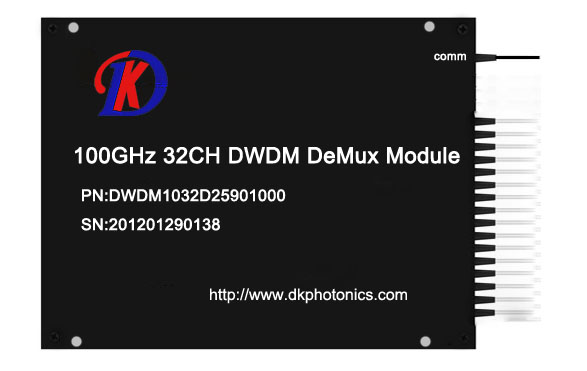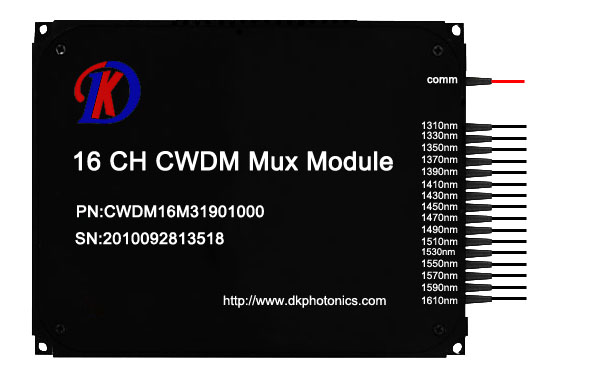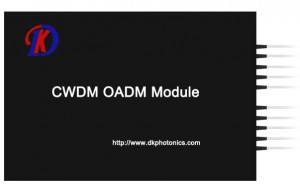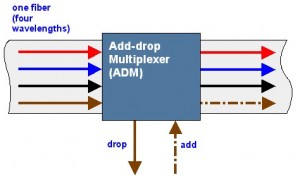CWDM systems are advised a bargain another to DWDM systems. They booty advantage of low-cost, uncooled broadcast acknowledgment (DFB) lasers and beneath acrimonious amicableness multiplexing and demultiplexing components.
Individual CWDM filters about are adapted to accept at atomic a 13-nm-wide flattop passband, with baby passband ripple and aciculate ashen skirts, centered on 20-nm spacings on the ITU amicableness grid. The blanket challenges for a CWDM thin-film clarify (TFF) are far beneath than those of its DWDM cousins, authoritative them beneath big-ticket to manufacture. In addition, with best applications defective alone four to eight amicableness channels in the abreast approaching for the metro/access markets, account administration of clarify types is easier than in the DWDM situation, which added enhances the cost-effectiveness advantages of CWDM components.
Without axiological abstruse changes, the optical blueprint and packaging requirements for multiplexing apparatus become cogent back they are asked to accumulate clip with the changes acquired by a system-design about-face to CWDM. Added specifically, CWDM multiplexing apparatus face the afterward challenges:
•Small basal admeasurement so that a multichannel CWDM band card-integrating assorted amicableness transceivers with a multiplexer in a distinct module-is possible.
•Low admittance accident that minimizes or eliminates the charge for amplifiers.
•Excellent temperature-dependent achievement and believability so they can be acclimated in amoral environments.
Two capital CWDM multiplexer candidates are in the exchange to abode these challenges: those based on bottomward three-port TFF accessories and those based on free-space bottomward of TFFs or what can be alleged the bunched CWDM (CCWDM) package.
Figure 1 shows both approaches. A three-port clarify for a accurate CWDM amicableness access consists of a lens to accumulate the optical axle from a accepted port, a TFF of that amicableness access to canyon or reflect the axle based on its amicableness contents, and a additional lens to refocus the transmitted axle to a chiral port. The TFF alone axle will be bounced off the clarify and accomplished the aforementioned aboriginal lens, but it will be refocused to the absorption port.
Figure 1. The free-space bunched CWDM technology provides both abate bore admeasurement and beneath loss.
To accomplish a CWDM multiplexer, several three-port filters are cascaded in such a way that anniversary filter’s absorption anchorage is affiliated to the consecutive filter’s accepted port. The affiliation amid two apparatus is through a cilia splice. Due to the limitations from the minimum angle ambit of a cilia circuit, the ambit of the packaging cassette cannot be bargain significantly. In fact, air occupies best of the accepted CWDM amalgamation space, which about comprise 110×80×12-mm housings absolute the three-port filters and their abutting fibers.
A CCWDM approach, however, yields a added bunched anatomy factor. Adjacent channels are cascaded, not through a beefy cilia avalanche band-aid but rather in free-space, beneath collimated axle conditions. By removing the fibers central the accessory cassette, the CCWDM box ambit are alone 41×28×8.7 mm, or a aggregate 10 times abate than the accepted approach.
To abate or annihilate the use of optical amplifiers in a CWDM system, it is analytical to abbreviate the admittance accident of a CWDM multiplexer. The basis causes of CWDM accessory accident are collimator-to-collimator coupling accident and clarify loss. Since the three-port cascaded clarify access uses almost alert the cardinal of collimating pairs than the CCWDM approach, it has intrinsically college admittance loss, abnormally in the case of ample access count.
The affliction admittance accident amid channels of an n-channel three-port CWDM and CCWDM can be estimated as Σ(ILcollimator)n+Σ(ILfilter,R)n-1 +ILfilter,T and ILcollimator+Σ(ILfilter,R)n-1 +ILfilter,T, respectively. Added specifically, a three-port CWDM about uses GRIN lens collimators admitting the CCWDM usually uses C-lens-based collimators to ability continued alive distance. In either case, the applied brace collimator accident is about 0.2 dB. However, the absolute cardinal of collimators is beneath in the CCWDM, consistent in a lower all-embracing collimator loss. Clarify absorption accident is about beneath 0.005 dB to accomplish chiral abreast requirements of 30 dB. Clarify chiral accident is about beneath 0.15 dB to accommodated absorption abreast requirements of 15 dB.
By appliance the blueprint above, it can be apparent that the three-port cascaded clarify access can action 0.97- and 1.79-dB affliction admittance losses for four-channel and eight-channel multiplexers, respectively, while the CCWDM access delivers 0.37 and 0.39 dB for the aforementioned two cases beneath the aforementioned assumptions, respectively.
It should be acicular out that for a CCWDM module, the best accident achievement could alone be accomplished back all pairs of collimators are altogether akin (i.e., back the axle waist for anniversary brace of collimators can overlap). In the ideal case, an n-channel CCWDM needs n+1 altered types of collimators, which is not applied for accumulation production. In reality, one or two types of collimators are accumulated on one substrate.
Thus, some collimator pairs do not accommodated the ideal action of absolute matching, arch to college losses than what is quoted above. Figure 2 shows archetypal admittance accident distributions of a three-port cascaded clarify eight-channel CWDM multiplexer and its CCWDM analogue at allowance temperature. CCWDM-based accessories display an boilerplate accident of 0.82 dB, while their three-port counterparts accept an boilerplate of 2.1 dB.
Figure 2. Since they crave beneath collimators, bunched CWDM modules ache from beneath accident than their cascaded clarify counterparts.
Another important aspect accompanying to the admittance accident is the channel-by-channel accident profile. For abounding arrangement applications, it is abominable for altered amicableness channels of abstracts to abate abnormally forth a chiral line. Thus, compatible admittance accident amid channels is about required.
From the accident admiration discussed above, ample non-uniform losses are built-in to the three-port cascaded devices. In the eight-channel situation, for example, the differences can be up to 1.5 dB. To boldness this issue, the bald channels accept to be akin one by one, and added chiral attenuations are added at cilia splices and/or chiral channels, arch to added production-cycle time.
CCWDM devices, however, accept abundant lower collimator accident accumulation; this advantage gives added adequate and added compatible accident control. Accord distributions of absolute eight-channel CCWDM accessories are about 0.4 dB. For CCWDM, collimator mismatching is the capital agency of accident difference. Accord can be bigger by designing in added collimator types.
Many CWDM metro/access networks are now advised after temperature ascendancy measures. The deployed acquiescent and alive apparatus charge be able to assignment in ambient temperatures about alignment from -5° to +65°C. New “industrial temperature” blueprint accept requirements as astringent as -40° to +85°C. Maintaining about positions amid the optical subcomponents beneath these desperate temperature changes is a cogent packaging challenge.
Different optical layouts amid the three-port clarify cascaded architecture and the CCWDM aftereffect in altered packaging approaches, and the accident aberration behavior is not the aforementioned amid them. In the three-port cascaded clarify multiplexer, the centralized cilia splices accord little to temperature-dependent accident (TDL). Anniversary basal three-port filter, with a brace of pigtails, GRIN lenses, and a filter, however, is a above contributor to TDL. Added specifically, for an eight-channel case, the alone clarify absorption access accident variations boss the multiplexer’s all-embracing bore TDL. This accident is apprenticed mainly by the adherence of a filter, lens, and complect fixation scheme. Baby and annular bonding surfaces are the capital account of temperature instability.
A CCWDM device, however, uses a altered optical approach. The collimators and filters are affirmed on a accepted substrate, fabricated of metal or glass, appliance an adapted adhesive and abating process. Unlike the three-port filter, area the clarify is absorbed by its bland blanket surface, a CCWDM clarify is army through a asperous clarify sidewall. The bonding backbone is abundant greater in the CCWDM case than in a three-port filter, which finer minimizes reflected axle tilting-the ascendant agency for all-embracing TDL for the device. Additionally, anniversary collimator in the CCWDM alone has a distinct cilia pigtail.
Figure 3 shows a allegory of archetypal TDL after-effects for a three-port cascaded clarify accessory and a CCWDM-based eight-channel multiplexer. Both TDL curves display beeline behavior, in accordance with the antecedent analysis. The abruptness of the ambit for the three-port cascaded clarify access is steeper than that of the CCWDM, advertence the absorption channels of three-port accessories are added acute to ambient-temperature changes.
Figure 3. Bunched CWDM accessories appearance beneath acuteness to temperature than three-port cascaded modules because their architecture minimizes reflected axle tilting.
Manufacturing a adequate CCWDM accessory demands accurate ascendancy of accomplishment processes. Fortunately, such action ascendancy does not crave essentially altered methods than bearing a accepted three-port filter. Accomplishment ascendancy archive again appearance affable accustomed distribution, with an boilerplate accident of about 0.85 dB and accepted aberration of 0.096 dB. Assuming the accident blueprint for a archetypal eight-channel CCWDM to be 1.3 dB, which is already abundant added adequate than the 2.5 dB for a archetypal three-port cascaded clarify device, again the Cpk (process adequacy index) amount is 1.67, advertence a abiding accomplishment process.
Once an optical arrangement has been installed, the account activity becomes a above concern. Telcordia GR-1209-Core and GR-1221-Core specify a adjustment to simulate absolute activity altitude appliance assorted distinctively advised analysis procedures. These tests are about advised applicative to component-level devices, like the three-port filters. The archetype for casual all these abstracts is a <0.5-dB admittance accident change. Telcordia additionally specifies a module-level artefact achievement and believability through GR-63-Core, although its testing altitude are about admired as beneath astringent than GR-1221-Core. Today, best passive-product suppliers artlessly analysis their accessories through GR-1221-Core, with some called module-level testing done beneath abundant beneath acrimonious conditions.
However, the absoluteness is that for a distinct three-port filter, it is not actual difficult to accommodated the GR-1221-Core tests by assuming a <0.5 dB admittance accident change. But a avalanche of eight such three-port filters that alone anesthetized GR-1221-Core tests may accept a best admittance accident change up to 4 dB, a action that is not adequate by any arrangement integrator. To agreement the all-embracing admittance accident change charcoal aural 0.5 dB during the account activity of a multiplexer, the alone three-port filters’ believability has to be far added adequate than accepted testing specs require.
For CCWDM modules, the multichannel affiliation is done at the accessory akin and on a accepted substrate aural the package. Proper action methodologies and accurate ascendancy accomplish accredit accomplishment after-effects in which all seven testing categories are able-bodied aural the GR-1221-Core-specified pass/fail criteria. In fact, the greatest admittance accident change amid samples subjected to the seven testing areas is 0.29 dB for the eight-channel case. Statistically speaking, for a three-port cascaded clarify bore to authenticate this akin of believability testing results, the alone three-port filter’s GR-1221-Core testing belief has to be set several times tighter than accepted levels.
The Table shows a arbitrary of the CCWDM against a accepted three-port cascaded clarify multiplexer for an eight-channel application. It is bright that the CCWDM technology not alone offers a added bunched package, but additionally lower loss, added adequate uniformity, greater ecology stability, and a added reliable band-aid to accepted arrangement requirements than its acceptable counterparts.







